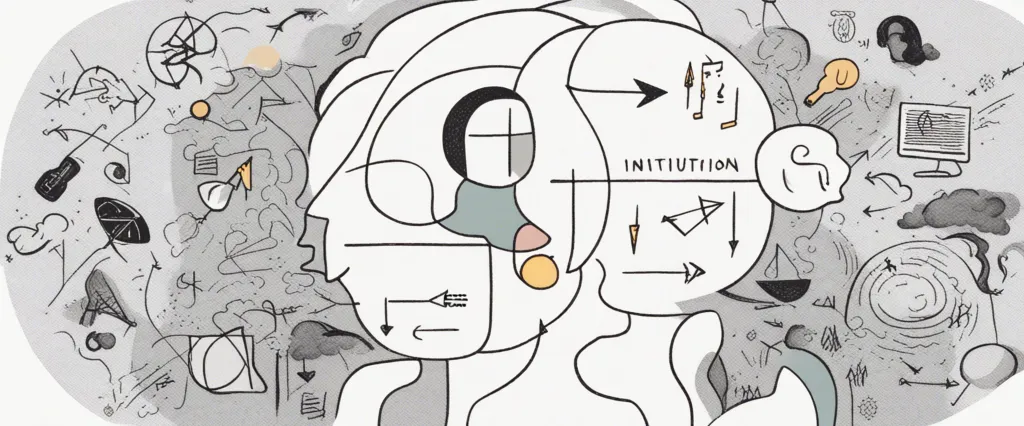
In a world where personal and professional fulfillment are increasingly intertwined, the search for one’s true passion becomes a captivating journey. Two influential works, “The Element” by Ken Robinson and “Art Work” by Heather Darcy Bhandari, shed light on the elusive nature of finding one’s creative path. While both books delve into the realms of personal satisfaction and creative success, they approach the subject matter from distinct perspectives. Robinson’s “The Element” emphasizes the connection between personal passion and fulfilling work, whereas Bhandari’s “Art Work” offers practical guidance for aspiring artists seeking to navigate the often daunting art world. Amidst these contrasting approaches, a compelling exploration emerges, urging us to reflect upon the nature of creativity, purpose, and the pursuit of excellence in our lives. Through a comparative study, we will dissect the core themes presented in these texts and examine how they resonate with individuals seeking their unique creative expression. By unveiling the striking similarities and subtle differences between these works, we aim to gain a deeper understanding of the transformative power of finding one’s element and the multifaceted nature of the art world.
Brief Summary of Two Books
The Element by Ken Robinson
“The Element: How Finding Your Passion Changes Everything” written by Sir Ken Robinson, explores the concept of personal fulfillment through finding one’s passion and states that by discovering our true potential, we can lead happier, more successful lives.
Robinson begins by questioning the conventional education system that often discourages creativity and limits individuality. He argues that creativity is just as important as literacy and that the lack of creative outlets in education impedes personal growth and development.
The book introduces the concept of the “Element” – the intersection between natural talents, deep interests, and personal enjoyment. Robinson believes that when individuals find their Element, they unlock their true potential and experience a sense of purpose, leading to a fulfilling life. Through various anecdotes and case studies, he illustrates stories of people from different walks of life who have found their Element and achieved great success in their chosen fields.
Furthermore, Robinson emphasizes the importance of cultivating a nurturing environment that encourages creativity and individuality. He stresses the need for parents, schools, and society as a whole to recognize and support diverse talents and interests.
“The Element” also explores how the fear of failure and societal pressures often prevent people from pursuing their passions. Robinson encourages readers to embrace the concept of “active patience,” emphasizing that finding one’s Element is a lifelong process that requires constant learning, exploration, and adaptability.
Ultimately, “The Element” serves as a call to action, urging individuals to seek out their true passions and create a life that aligns with their personal desires and talents. By doing so, Robinson argues that we can achieve not only personal fulfillment but also make meaningful contributions to society as a whole.
Art Work by Heather Darcy Bhandari
“Art Work: A Guide to Careers in the Arts” by Heather Darcy Bhandari is a comprehensive and practical guidebook that provides insights, advice, and real-life experiences for those seeking a career in the arts industry. Heather Darcy Bhandari, a veteran in the art world, shares her knowledge and expertise to help readers navigate the various paths and challenges involved in pursuing a career as an artist, curator, gallerist, art consultant, or any other creative role.
The book is divided into three sections, each focusing on a different aspect of the art world. The first section explores the process of preparing for a career in the arts, discussing topics such as developing a personal artistic style, building a portfolio, networking, applying for grants and residencies, and the importance of art education. Bhandari offers practical advice on how to effectively present one’s work, create a compelling artist statement, and establish a professional online presence.
The second section delves into the different careers available in the arts, providing insights into the day-to-day responsibilities, challenges, and rewards of each role. It covers diverse areas such as working in galleries and museums, art administration, art entrepreneurship, art criticism, and teaching art. Bhandari shares the experiences of professionals in these fields, shedding light on the skills, qualifications, and networking strategies required to succeed in each one.
The final section of the book focuses on the business and financial aspects of working in the arts. Bhandari provides guidance on pricing artwork, selling and promoting art, negotiating contracts, understanding legal issues, and managing finances. She emphasizes the importance of cultivating relationships with collectors, curators, and other industry professionals, as well as understanding the importance of marketing and branding oneself.
Overall, “Art Work” is a comprehensive resource for anyone seeking a career in the arts. Whether readers are just starting out or looking to advance their careers, Bhandari’s practical advice, real-life examples, and insights into the inner workings of the art world make this book an invaluable guide for navigating the complexities of the industry.
Comparison between Two Books

Similarities in Career Development
Both “The Element” by Ken Robinson and “Art Work” by Heather Darcy Bhandari discuss the concept of career development and offer insights into finding one’s true passion and purpose.
1. The importance of self-exploration: Both books emphasize the significance of self-discovery and exploring one’s interests, skills, and talents. They highlight that the key to finding a fulfilling career lies in understanding oneself, identifying personal strengths, and aligning those with professional pursuits.
2. The role of education: Both authors recognize the role of education in shaping one’s career path. They acknowledge that traditional educational systems often prioritize narrow definitions of success and fail to fully support individuals in navigating diverse career options. Robinson and Bhandari encourage readers to seek education beyond academic qualifications and to embrace continuous learning as a means to develop their careers.
3. The value of creativity and innovation: Robinson’s “The Element” emphasizes the significance of creativity and innovation in career development, arguing that finding one’s passion often involves exploring unconventional or non-traditional paths. Similarly, Bhandari’s “Art Work” focuses on the unique challenges faced by artists in the creative industry, highlighting the importance of creativity in pursuing an artistic career and the entrepreneurial skills needed to navigate this field.
4. Overcoming obstacles and setbacks: Both books address the inevitable obstacles and setbacks that individuals may encounter throughout their career journeys. They offer insights and practical advice on how to persevere, embrace failures as learning opportunities, and maintain resilience in the face of challenges.
5. Authenticity and personal fulfillment: “The Element” and “Art Work” emphasize the importance of authenticity and personal fulfillment in career development. They encourage readers to prioritize their own passions and values rather than conforming to societal expectations, urging individuals to create fulfilling careers that align with their unique aspirations and personal definitions of success.
Overall, both “The Element” by Ken Robinson and “Art Work” by Heather Darcy Bhandari focus on the process of career development, highlighting the significance of self-exploration, education, creativity, resilience, and authenticity in finding a fulfilling and meaningful path.
Divergences in Career Development
Both The Element by Ken Robinson and Art Work by Heather Darcy Bhandari discuss elements of career development, but they diverge in their approach, focus, and audience.
The Element primarily focuses on the concept of finding one’s passion and aligning one’s career with it. Robinson argues that identifying and pursuing our true talents and interests is key to achieving personal fulfillment and success. The book emphasizes the importance of creativity and explores how our education system often fails to nurture these talents. It primarily targets individuals who feel stuck or dissatisfied in their current careers and encourages them to break free from societal norms to pursue their passions.
On the other hand, Art Work provides a comprehensive guide to navigating the art world and establishing a successful career as an artist. Bhandari offers practical advice, such as building a portfolio, approaching galleries, networking, and marketing oneself. This book primarily targets artists, art students, and aspiring professionals interested in the art industry. While it acknowledges the importance of passion and creativity, it also highlights the significance of networking, self-promotion, and professionalism in the art world.
In terms of divergence, The Element takes a broader approach by discussing career development from a more holistic perspective. It encourages individuals to explore their passions beyond the confines of traditional careers, allowing for a wider range of possibilities. The focus is on personal growth, fulfillment, and self-discovery, rather than specific industries or professions.
In contrast, Art Work narrows its focus and specifically addresses the art industry. It provides practical tips and specific steps to succeed in this particular field, acknowledging the realities and challenges artists might face. While it recognizes the importance of passion, it also emphasizes the need for professional skills and networking within the art world.
Overall, while both books touch upon aspects of career development, The Element leans towards a broader understanding of fulfilling careers, emphasizing personal passions and creativity, while Art Work provides a specialized guide to the art industry, highlighting practical skills and strategies for success.

Conclusion
“The Element” focuses on discovering one’s passion and natural talents, offering insights on how to find personal fulfillment and achieve success. Ken Robinson, a renowned education expert, provides valuable guidance and real-life examples to inspire readers.
On the other hand, “Art Work” provides practical advice for artists on topics such as networking, promoting their work, pricing, negotiating contracts, and more. Heather Darcy Bhandari, an experienced art dealer and consultant, shares her expertise to help artists navigate the art world and develop successful careers.
Ultimately, the choice between the two books depends on your interests and what you seek to gain from reading. If you are interested in personal development and finding your true passion, “The Element” might be more suitable. If you are an artist or aspiring to work in the art industry, “Art Work” can provide valuable insights and practical advice. You may also consider reading reviews or summaries of both books to determine which aligns more with your specific needs and interests.


